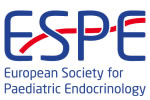hrp0092rfc5.4 | Thyroid | ESPE2019
Thyroid Dysfunction in Patients Following Thymus Transplantation in a Tertiary Centre: A 10-Year Experience
Aftab Sommayya , Goff Nicole , Langham Shirley , Amin Rakesh , Hindmarsh Peter , Brain Caroline , Shah Pratik , Spoudeas Helen , Dattani Mehul , Worth Austen , Katugampola Harshini , Peters Catherine
hrp0089fc11.6 | Bone, Growth Plate & Mineral Metabolism 2 | ESPE2018
Management of Severe, Protracted Hypocalcaemia in Patients Undergoing Thymus Transplantation in a Tertiary Centre: A 10-Year Experience
Goff Nicole , Katugampola Harshini , Monti Elena , Taylor Katherine , Amin Rakesh , Hindmarsh Peter , Peters Catherine , Pratik Shah , Spoudeas Helen , Dattani Mehul , Allgrove Jeremy , Brain Caroline
hrp0094p1-142 | Sex Endocrinology and Gonads B | ESPE2021
Investigation of primary adrenal insufficiency (PAI) in children with 46,XY differences in sex development (DSD)
Man Elim , Peters Catherine , Brain Caroline , Lichtarowicz-Krynska Ewa , Bahl Shailini , Buchanan Charles , Spoudeas Helen , Aitkenhead Helen , Hindmarsh Peter , Dattani Mehul , Achermann John ,
hrp0084p3-746 | Diabetes | ESPE2015
Residual C-Peptide in Paediatric Patients with Type 1 Diabetes
Martin-Frias Maria , Oyakawa Yoko P , Alonso Milagros , Roldan Belen , Alvarez M Angeles , Barrio Raquel
hrp0097rfc14.5 | Late Breaking | ESPE2023
Functional demonstration that variants in the C-terminal of IHH cause short stature and/brachdactyly
Diaz-González Francisca , Modamio-Høybjør Silvia , Lucas-Castro Elsa , Coral Barreda-Bonis Ana , Campos-Barros Angel , González-Casado Isabel , Sentchordi-Montané Lucia , E. Heath Karen
hrp0084p2-561 | Thyroid | ESPE2015
Analysis of Chosen Polymorphisms rs5742909 C/T – CTLA4, rs7522061 C/T – FCRL3, rs7138803 A/G – FAIM2 in Pathogenesis of Autoimmune Thyroid Diseases in Children
Jakubowska Ewa , Goscik Joanna , Wawrusiewicz-Kurylonek Natalia , Bossowska Anna , Kretowski Adam , Bossowski Artur
hrp0082p2-d3-480 | Hypoglycaemia | ESPE2014
The Role of Plasma C-Peptide Concentration in the Diagnosis of Congenital Hyperinsulinism
Green Julie , Giri Dinesh , Gangadharan Arundoss , Blair Jo , Dharmaraj Poonam , Das Urmi , Senniappan Senthil , Didi Mohammed
hrp0089rfc5.2 | Thyroid | ESPE2018
Analysis of Chosen Polymorphisms rs7138803 A/G - FAIM2, rs7093069 C/T - IL-2RA, rs5742909 C/T - CTLA-4 in Pathogenesis of Hashimoto’s Thyroiditis in Children
Bossowski Artur , Gościk Joanna , Wawrusiewicz-Kurylonek Natalia , Bossowska Anna , Aversa Tommaso , Corica Domenico , Krętowski Adam , Waśniewska Małgorzata
hrp0084p2-290 | Diabetes | ESPE2015
C-Peptide Variation after the Diagnosis of Type 1 Diabetes in Paediatric Age
Correia Joana , Mendes Catarina , Pinheiro Marina , Preto Clara , Cardoso Helena , Oliveira Maria Joao , Borges Teresa
hrp0089p1-p101 | Fat, Metabolism and Obesity P1 | ESPE2018
Circulating Mots-C Levels are Decreased in Obese Male Children and Adolescents and Associated with Insulin Resistance
Du Caiqi , Zhang Cai , Wu Wei , Liang Yan , Hou Ling , Wang Anru , Ning Qin , Luo Xiaoping



